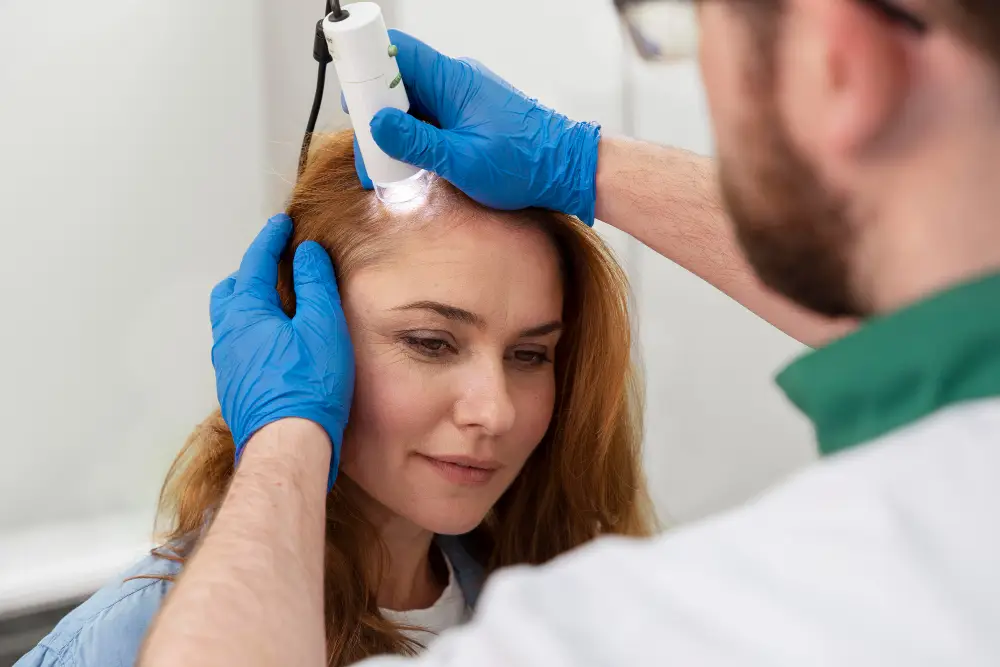
Navigating Stem Cell Pathways for Spina Bifida: A Comprehensive Guide
Insights from the Regencord Team in Pereira, Colombia
Key Takeaways for Spina Bifida Care
- Spina bifida is a complex neural tube defect, with outcomes varying widely based on its type and severity.
- Conventional care focuses on surgical repair, symptom management, and rehabilitative support, aiming to enhance independence.
- Emerging research in regenerative medicine, including certain stem cell approaches, is being explored globally for its potential role in neural tube defect repair and motor function enhancement.
- Colombia, particularly cities like Pereira, offers a regulated and patient-centric environment for exploring advanced medical pathways, combining a robust healthcare infrastructure with dedicated patient support.
- Making informed decisions requires transparent information, a thorough case review, and understanding both the current evidence and the logistical support available for international care.
Table of Contents
- Introduction: Understanding Spina Bifida and Emerging Pathways
- The Stakes & Critical Implications of Spina Bifida
- Understanding Conventional Approaches to Spina Bifida in the USA
- The Emerging Landscape: Regenerative Medicine & Spina Bifida
- The Pereira, Colombia Advantage: A Contextual Exploration for Spina Bifida Care
- Introducing: The Regencord Neural Pathway Planner
- Our Regenerative Philosophy for Spina Bifida
- Overcoming Common Hesitations: Why Seeking Clarity is a Strategic Advantage
- Glossary of Key Terms
- Frequently Asked Questions About Spina Bifida & Regenerative Pathways
- Your Next Step: Discovering Pathways to Clarity
Introduction: Understanding Spina Bifida and Emerging Pathways
For families confronting a diagnosis of spina bifida, a neural tube defect affecting thousands globally each year, the journey can feel incredibly complex. From the initial diagnosis, often prenatally, to navigating lifelong care, the path is marked by profound questions and a search for the most beneficial options. Parents and caregivers frequently seek information on every possible avenue to enhance motor function, improve neurological outcomes, and support the overall well-being of their loved ones. This drive leads many to explore a spectrum of care, including conventional approaches and the continually evolving field of regenerative medicine, such as stem cell considerations for spina bifida.
Our goal at Regencord, based in Pereira, Colombia, is to provide a transparent, educational resource that empowers you with knowledge. This guide delves into the intricate nature of spina bifida, outlines traditional management strategies, and introduces the current understanding of regenerative medicine pathways. We aim to clarify the landscape, helping you understand how innovative approaches are being explored and what a comprehensive patient journey for care in a destination like Pereira might entail.
The Stakes & Critical Implications of Spina Bifida
Spina bifida occurs when the neural tube, which forms the brain and spinal cord, doesn’t close completely during early fetal development. This can lead to a range of physical and cognitive challenges, depending on the location and severity of the opening. As highlighted by the U.S. National Institute of Neurological Disorders and Stroke (NINDS), part of the NIH, the implications can include varying degrees of paralysis, bladder and bowel control issues, hydrocephalus, and learning differences. The impact on a child’s quality of life and a family’s daily routine underscores the urgent need for comprehensive and thoughtful care strategies.
The pursuit of effective interventions, from early neural tube defect repair to long-term rehabilitative therapies, is driven by the desire to mitigate these challenges. Families often consider all available options, including ongoing research into therapies that might address the underlying neurological issues or enhance existing function. This often involves looking beyond immediate geographical boundaries for solutions that offer hope and progress.
Understanding Conventional Approaches to Spina Bifida in the USA
In countries like the USA, conventional management for spina bifida is multidisciplinary, focusing on addressing the physical manifestations of the condition. Historically, immediate postnatal surgery to close the spinal opening has been the standard. However, research supported by the National Institutes of Health (NIH), such as the MOMS trial, has shown that fetal surgery (neural tube defect repair performed before birth) can improve some outcomes, particularly reducing the need for shunt placement for hydrocephalus and enhancing motor function in some cases. This demonstrates a proactive shift in addressing the condition earlier.
Post-surgical care in the USA, guided by organizations like the Centers for Disease Control and Prevention (CDC) and the American Academy of Pediatrics, involves a team of healthcare professionals. This team typically includes neurosurgeons, orthopedists, urologists, physical therapists, occupational therapists, and social workers. Treatment strategies focus on:
- Surgical Intervention: Closing the spinal defect, often prenatally or soon after birth.
- Hydrocephalus Management: Shunt placement to manage excess cerebrospinal fluid.
- Orthopedic Care: Addressing bone and joint issues, including clubfoot or scoliosis.
- Urological Management: Strategies for bladder and bowel control.
- Rehabilitation Therapy: Physical and occupational therapy to enhance mobility and independence.
While these approaches are foundational, families often continue to seek additional pathways that could further support neural regeneration or enhance specific functions, particularly for motor function enhancement. This search often leads to exploring the evolving landscape of regenerative medicine, which is where the conversation around stem cell considerations for spina bifida arises.
The Emerging Landscape: Regenerative Medicine & Spina Bifida
The field of regenerative medicine, particularly the exploration of stem cell applications, represents an area of significant scientific interest for conditions like spina bifida. Rather than simply managing symptoms, regenerative approaches aim to support the body’s intrinsic abilities for healing and repair. For spina bifida, research is exploring various avenues, including:
- Fetal Therapy & Repair Enhancement: Investigating if stem cells, delivered during fetal surgery, could improve the healing process of the neural tube defect repair, potentially mitigating some long-term neurological damage. Some PubMed-indexed studies are exploring this area in preclinical and early-phase clinical settings.
- Postnatal Neurological Support: Exploring the potential of different types of stem cells (e.g., mesenchymal stem cells) to provide neuroprotective or anti-inflammatory effects, or to encourage the repair of damaged neural tissues. This could theoretically contribute to motor function enhancement or improved bladder control.
- Biomaterial Integration: Combining stem cells with bioengineered scaffolds to create a more supportive environment for spinal cord repair.
It’s crucial to understand that many of these applications are currently within research frameworks. Regulatory bodies like the U.S. Food and Drug Administration (FDA) emphasize caution regarding unapproved stem cell interventions, particularly those marketed with unsubstantiated claims. Our approach is always to discuss the current evidence base, focusing on the careful consideration of established research from reputable sources like the NIH and peer-reviewed journals. The discussions around stem cell pathways for spina bifida are about carefully evaluated potential, not definitive pronouncements of outcomes. This ethical framework guides all conversations at Regencord.
The Pereira, Colombia Advantage: A Contextual Exploration for Spina Bifida Care
For families exploring advanced medical pathways for conditions like spina bifida, the choice of location for care extends beyond clinical offerings. It encompasses the entire patient journey. Pereira, Colombia, and the team at Regencord, present a compelling environment for several key reasons:
Infrastructure & Healthcare Standards
Colombia has invested significantly in its healthcare infrastructure, with many institutions meeting international standards. Facilities in Pereira adhere to stringent national health regulations overseen by the Colombian Ministry of Health and Social Protection and the National Institute for Food and Drug Surveillance (INVIMA). These bodies ensure that medical practices, including those exploring regenerative medicine, operate within a regulated framework. This commitment to regulated quality provides a foundation of trust for families considering care in the region.
The Patient Journey & Holistic Support
Navigating the complexities of a rare condition like spina bifida often feels like a solitary journey, marked by endless research and emotional strain. Patients and their families frequently express a profound need for not just clinical excellence, but a truly holistic ecosystem that supports every step – from initial inquiry and logistical planning to comprehensive post-treatment support and integration back home. This often transcends what traditional, localized care models can offer, highlighting the critical role of dedicated patient advocacy teams in demystifying the international care process. The team at Regencord understands that effective care involves seamless coordination of travel, accommodation, local transportation, and communication, ensuring families can focus entirely on their loved one’s well-being.
Cost-Effectiveness & a Supportive Environment
Beyond its growing reputation for high-quality medical infrastructure, Pereira, Colombia, offers a unique blend of clinical professionalism and an inherently supportive cultural environment. Families seeking advanced care for conditions such as spina bifida often find unexpected comfort in the region’s focus on family integration in care, coupled with a cost-effectiveness that allows for longer, more thorough recovery periods without compromising standards. The city’s serene setting provides a less stressful backdrop for recovery, an often-overlooked but crucial element in healing, particularly for pediatric conditions. This combination allows for a more extended, less financially burdensome stay, enabling comprehensive rehabilitative support alongside any regenerative pathways explored.
Introducing: The Regencord Neural Pathway Planner
To assist families in making informed decisions about spina bifida care, the Regencord team has developed “The Regencord Neural Pathway Planner.” This proprietary, branded resource is designed as a structured checklist and informational tool. It guides you through key considerations when evaluating potential care options, especially those involving regenerative medicine and international travel. The planner helps you organize questions, understand logistical requirements, and assess the various aspects of a comprehensive care plan. It’s an essential aid for clarifying your family’s unique needs and aligning them with available pathways.
This tool is not just a checklist; it’s a conversation starter, designed to empower you to ask the right questions and gather all necessary information during your confidential case review. It covers aspects from the latest research on neural tube defect repair to practical considerations for a patient journey, ensuring a thorough evaluation of any potential care for spina bifida, including options for motor function enhancement.
Our Regenerative Philosophy for Spina Bifida
At Regencord in Pereira, Colombia, our philosophy regarding regenerative medicine for spina bifida is rooted in ethical exploration, transparency, and patient empowerment. We recognize the profound desire for therapies that could offer a meaningful difference in the lives of those affected by neural tube defects. Our approach is educational and supportive, focusing on:
- Evidence-Informed Discussion: We discuss potential regenerative pathways, including stem cell considerations, within the context of the latest scientific literature, primarily drawing from PubMed-indexed peer-reviewed journals and insights from organizations like the NIH. We transparently present what is currently understood, what remains in research, and what is regulated.
- Holistic Patient Assessment: Every individual with spina bifida has unique needs. Our process involves a thorough review of medical history and current condition to determine suitability for various pathways, aligning with a personalized approach.
- Integration with Comprehensive Care: Regenerative approaches are viewed as one component within a broader, integrated care strategy that includes conventional rehabilitative therapies and ongoing support. The goal is to explore how different elements of care can collectively support overall well-being and potential motor function enhancement.
- Ethical Standards: Our team adheres to strict ethical guidelines, ensuring that all discussions about regenerative therapies are open, honest, and focused on providing realistic expectations rather than making unverified claims.
We believe that families deserve comprehensive, unbiased information to navigate complex medical decisions, especially when considering emerging areas like stem cell treatment for spina bifida. Our role is to facilitate understanding and access to carefully considered options.
Overcoming Common Hesitations: Why Seeking Clarity is a Strategic Advantage
Considering advanced care, especially internationally, often comes with a set of understandable concerns. Here, we address some common hesitations families have when exploring stem cell treatment for spina bifida or similar pathways:
“Stem cell treatments for spina bifida sound experimental and risky. How can I trust an unproven therapy, especially internationally?”
It’s natural to approach emerging therapies with caution. Our first step is always educational. We engage in a confidential discussion about the current state of regenerative medicine research for spina bifida, drawing on findings from institutions like the NIH and peer-reviewed journals. We clarify the regulated environment in Colombia, overseen by INVIMA and the Colombian Ministry of Health, which ensures facilities meet established standards. This process aims to shift the focus from fear of the unknown to an informed understanding of carefully evaluated potential options, openly discussing the evidence and regulatory landscape.
“The thought of traveling internationally for my child’s complex medical condition (spina bifida) is overwhelming – logistically, financially, and emotionally.”
We understand that the logistics of international travel for medical care can seem daunting. That’s why a dedicated patient advocacy team is central to the Regencord experience. We proactively manage the intricacies of travel arrangements, accommodation, medical records transfer, and local support, translating a complex process into a manageable, supported pathway. Financially, while costs are a consideration, many families find that the comprehensive, personalized care available in Pereira, combined with local cost efficiencies, offers significant value, allowing for more thorough and comfortable recovery periods without compromising standards. Our aim is to alleviate logistical burdens, enabling you to focus entirely on your child’s well-being.
“Will the care quality and medical standards in Colombia meet what I expect from my home country (e.g., USA)?”
Colombia has rapidly advanced its healthcare sector, with many facilities and medical professionals meeting high international standards. The country’s Ministry of Health and INVIMA enforce rigorous regulations on medical practice and facility accreditation. Many Colombian medical professionals receive training internationally, bringing a global perspective to patient care. During your confidential case review, we can provide further information on specific accreditations and the robust quality oversight that defines the medical environment in Pereira, offering a clear picture of the standards you can expect.
“Is this just a sales pitch? How do I know I’m getting objective information about stem cell options for spina bifida?”
Our guiding principle is education and transparency. The initial confidential case review is designed as an information-gathering and educational process, not a commitment to treatment. Our team discusses eligibility, potential pathways, known risks, and current understanding of regenerative therapies for spina bifida, all grounded in verifiable facts and scientific evidence from approved sources. We believe in empowering families to make their own informed decisions based on comprehensive and objective information, respecting your autonomy throughout the process.
Glossary of Key Terms
- Spina Bifida
- A birth defect where there is an incomplete closing of the backbone and membranes around the spinal cord.
- Neural Tube Defect (NTD)
- A birth defect of the brain or spinal cord that occurs when the neural tube does not close completely during early fetal development.
- Myelomeningocele
- The most severe form of spina bifida, where the spinal cord and nerves protrude through an opening in the back, typically leading to neurological impairment.
- Fetal Therapy
- Medical interventions performed on a fetus while still in the womb, such as surgery to repair a neural tube defect before birth.
- Regenerative Medicine
- A branch of medicine that develops methods to regrow, repair, or replace damaged or diseased cells, organs, or tissues.
- Stem Cells
- Undifferentiated biological cells that can differentiate into specialized cells and can divide to produce more stem cells. They are a focus of research for their potential in tissue repair and regeneration.
- Motor Function Enhancement
- Improvements in the ability to move and control the body’s muscles, a key area of focus in spina bifida care.
- INVIMA
- Colombia’s National Institute for Food and Drug Surveillance, the governmental body responsible for regulating and overseeing medical products, devices, and healthcare facilities.
Frequently Asked Questions About Spina Bifida & Regenerative Pathways
- What exactly is spina bifida, and how does it impact a child?
- Spina bifida is a condition where the spinal column doesn’t close completely during pregnancy, leading to varying degrees of neurological challenges. These can include issues with movement, sensation, bladder and bowel control, and sometimes cognitive development. The specific impact depends significantly on the type and location of the spinal opening.
- Are stem cell treatments for spina bifida widely approved and available?
- Currently, many stem cell approaches for spina bifida are considered within research or investigational frameworks in many countries. While promising studies are ongoing, it’s important to differentiate between research and standard approved care. Regencord focuses on discussing pathways within regulated environments and based on available evidence, drawing from sources like NIH and PubMed.
- What kind of support can families expect when traveling to Pereira, Colombia, for medical care?
- Families exploring care through the Regencord team in Pereira receive comprehensive support. This includes assistance with travel logistics, accommodation, local transportation, interpretation services, and coordination of medical appointments. The goal is to ensure a comfortable and stress-free experience, allowing families to focus on care.
- How does the quality of medical care in Pereira compare to other countries?
- Colombia has made substantial advancements in its healthcare sector, with many facilities meeting international standards. Pereira hosts modern hospitals and clinics regulated by the Colombian Ministry of Health and INVIMA, ensuring adherence to national quality guidelines. Medical professionals are often highly trained, with many having international education and experience.
- What is the first step to understand if a regenerative pathway is appropriate for my family?
- The initial step is to contact the Regencord team for a confidential case review. This allows our team to gather essential medical information, understand your family’s specific needs, and provide an educational overview of potential pathways, including the current understanding of regenerative approaches for spina bifida. It’s an opportunity to ask questions and gain clarity without any obligation.
Your Next Step: Discovering Pathways to Clarity
The journey with spina bifida requires informed decisions, proactive exploration, and a trusted support system. If you are seeking to understand the full spectrum of care options, including emerging regenerative pathways and the unique advantages of a patient journey in Pereira, Colombia, the team at Regencord is here to help.
Discover if you are a candidate for the regenerative medicine pathways available through the team at Regencord in Pereira, Colombia. Contact us for a confidential case review. This is an opportunity to discuss your specific situation, explore potential pathways, and receive personalized guidance.



